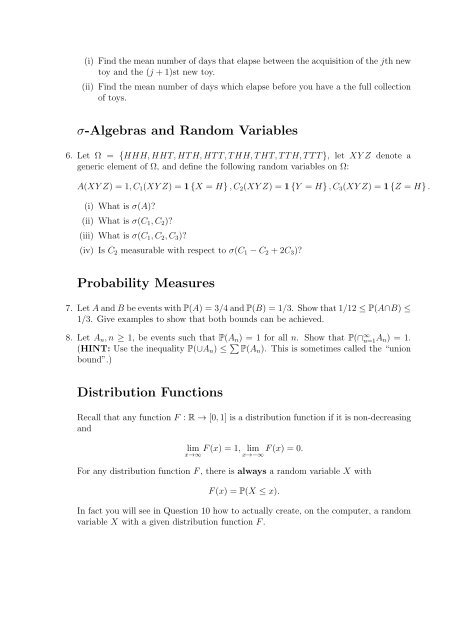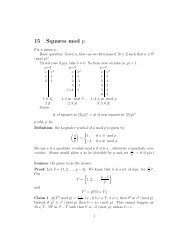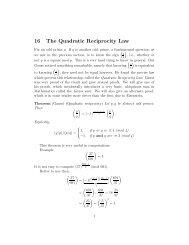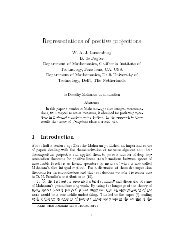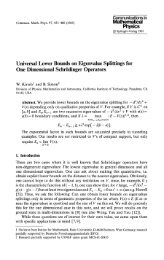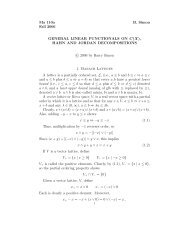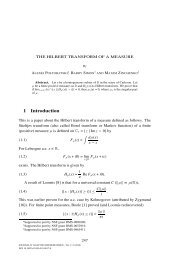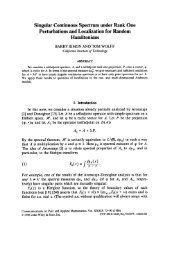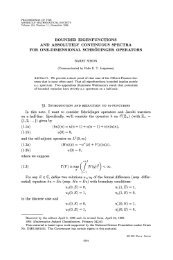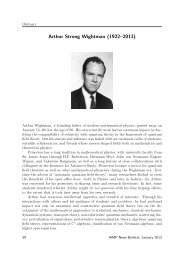Homework 1
Homework 1
Homework 1
You also want an ePaper? Increase the reach of your titles
YUMPU automatically turns print PDFs into web optimized ePapers that Google loves.
(i) Find the mean number of days that elapse between the acquisition of the jth new<br />
toy and the (j + 1)st new toy.<br />
(ii) Find the mean number of days which elapse before you have a the full collection<br />
of toys.<br />
σ-Algebras and Random Variables<br />
6. Let Ω = {HHH, HHT, HT H, HT T, T HH, T HT, T T H, T T T }, let XY Z denote a<br />
generic element of Ω, and define the following random variables on Ω:<br />
A(XY Z) = 1, C 1 (XY Z) = 1 {X = H} , C 2 (XY Z) = 1 {Y = H} , C 3 (XY Z) = 1 {Z = H} .<br />
(i) What is σ(A)?<br />
(ii) What is σ(C 1 , C 2 )?<br />
(iii) What is σ(C 1 , C 2 , C 3 )?<br />
(iv) Is C 2 measurable with respect to σ(C 1 − C 2 + 2C 3 )?<br />
Probability Measures<br />
7. Let A and B be events with P(A) = 3/4 and P(B) = 1/3. Show that 1/12 ≤ P(A∩B) ≤<br />
1/3. Give examples to show that both bounds can be achieved.<br />
8. Let A n , n ≥ 1, be events such that P(A n ) = 1 for all n. Show that P(∩ ∞ n=1A n ) = 1.<br />
(HINT: Use the inequality P(∪A n ) ≤ ∑ P(A n ). This is sometimes called the “union<br />
bound”.)<br />
Distribution Functions<br />
Recall that any function F : R → [0, 1] is a distribution function if it is non-decreasing<br />
and<br />
lim F (x) = 1, lim F (x) = 0.<br />
x→∞ x→−∞<br />
For any distribution function F , there is always a random variable X with<br />
F (x) = P(X ≤ x).<br />
In fact you will see in Question 10 how to actually create, on the computer, a random<br />
variable X with a given distribution function F .


